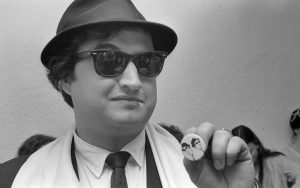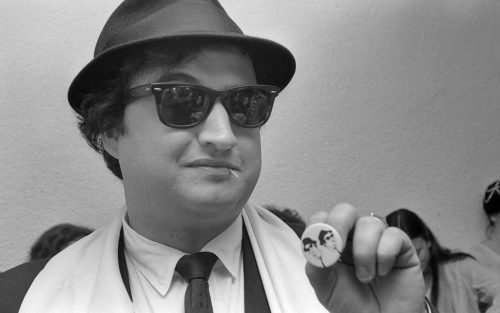By Chris Byrd | Catholic News Service
NEW YORK (CNS) — On March 5, 1982, the popular and acclaimed comedic actor John Belushi was found dead of a drug overdose in his bungalow at Los Angeles’ storied Chateau Marmont hotel. He was just 33.
The meteoric ascent and tragic downfall of this profoundly gifted yet troubled performer, who has now been gone longer than he lived, are recounted in “Belushi.” The ultimately unsatisfying documentary — which contains some memorable moments but is marred by stylistic tics and defects — premieres on the Showtime pay-cable channel Sunday, Nov. 22, 9–11 p.m. EST.
Besides the frequent references to substance abuse that are integral to its story, the profile includes fleeting yet gratuitous nudity, occasional rough and crude language, and multiple obscene gestures. It thus makes acceptable programing for adults only.
Previously unheard audiotapes are the foundation of the film, which highly regarded documentarian R.J. Cutler (“A Perfect Candidate”) wrote and directed. They’re culled from interviews author Tanner Colby conducted soon after the star’s death for his 2005 book “Belushi: A Biography,” which was co-written by the comedian’s widow, Judith Belushi Pisano.

Among those interviewed are the late actress Carrie Fisher, deceased director Harold Ramis and Belushi’s close friend and frequent collaborator Dan Aykroyd. Striking candid photos (some taken by Belushi himself), revelatory home movies and archival footage of the comic’s performances and interviews add further texture.
Cutler fastidiously hews to a linear narrative in unfolding his subject’s turbulent life, from Belushi’s youth in the Chicago suburb of Wheaton, Illinois, to his fame as a TV and film star. The son of Albanian immigrants, Belushi discovered his vocation when he saw Chicago’s fabled Second City sketch comedy troupe — an ensemble he would later join — and perform for the first time.
As his widow recalls, he said to her: “This is what I want to do. Be an actor and create.”
Older viewers will remember that Belushi first became a national figure in 1975 as one of the original cast members of the innovative series “Saturday Night Live.” After SNL’s breakout star, Chevy Chase, left the show early in its second season, Belushi gained further prominence.
He did so, according to the SNL’s creator, veteran executive producer Lorne Michaels, by establishing a “connection to the audience.”
“They could see right into his heart,” Michaels explains. “There was so much vulnerability, you thought you knew who he was.” Offscreen, however, Belushi’s erratic behavior — fueled by his increasing use of narcotics — signaled, says Ramis, “the beginnings of wretched excess.”
At his apogee, Belushi was seemingly ubiquitous. He was appearing on the country’s highest rated TV show, starring in its most popular big-screen comedy, “Animal House,” and had a top-selling music album — “Briefcase Full of Blues” — as well.
SNL alumnus Bill Hader’s recitations of Belushi’s words, especially in his early, sweetly earnest letters to Pisano, perfectly capture his attitude and spirit, providing the retrospective with its strongest interludes. “Belushi” also evokes a palpable sense of loss as it details a talent squandered, a career cut short and a public deprived of many years’ worth of laughs.
Cutler, however, paints himself into a corner by relying so much on the tapes to tell his tale. Robert Valley’s computer animation is meant to enhance the recollections they contain, but it can only go so far as a substitute for seeing real people on screen.
Cutler would have been better off bolstering his film with further interviews. Belushi’s SNL castmates Chase and Bill Murray, for instance, are notably absent.
Sadly, it’s too late to hear from Robin Williams, who was with his fellow comedian during Belushi’s last days. But actor Robert De Niro, also was present as the end approached, might have offered viewers a deeper insight into Belushi’s terminal decline.
In fact, Cutler scarcely mentions Belushi’s final hours, perhaps assuming his audience recollects the events surrounding the actor’s demise. But many tuning in would not yet have been born when Belushi made his untimely exit and will thus be left mystified. A fuller picture of Belushi’s fall, while perhaps painful to narrate, would have made for a more informative overview.
Byrd is a guest reviewer for Catholic News Service.






















